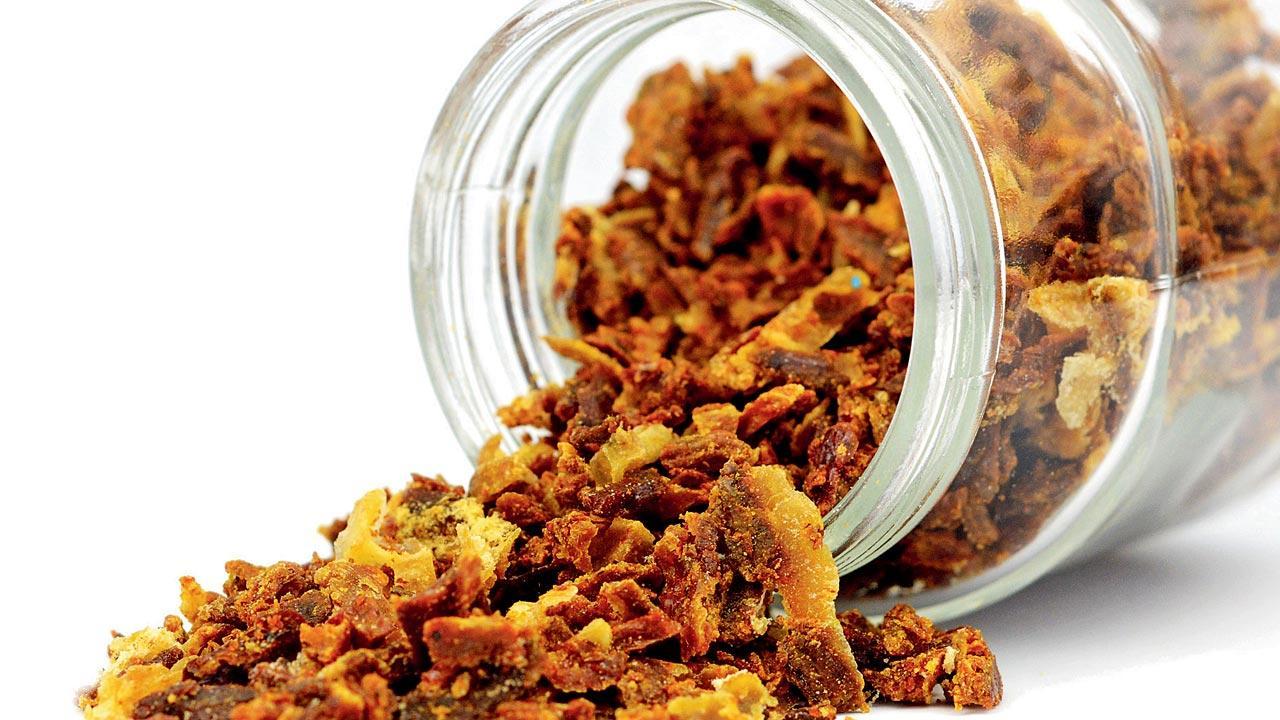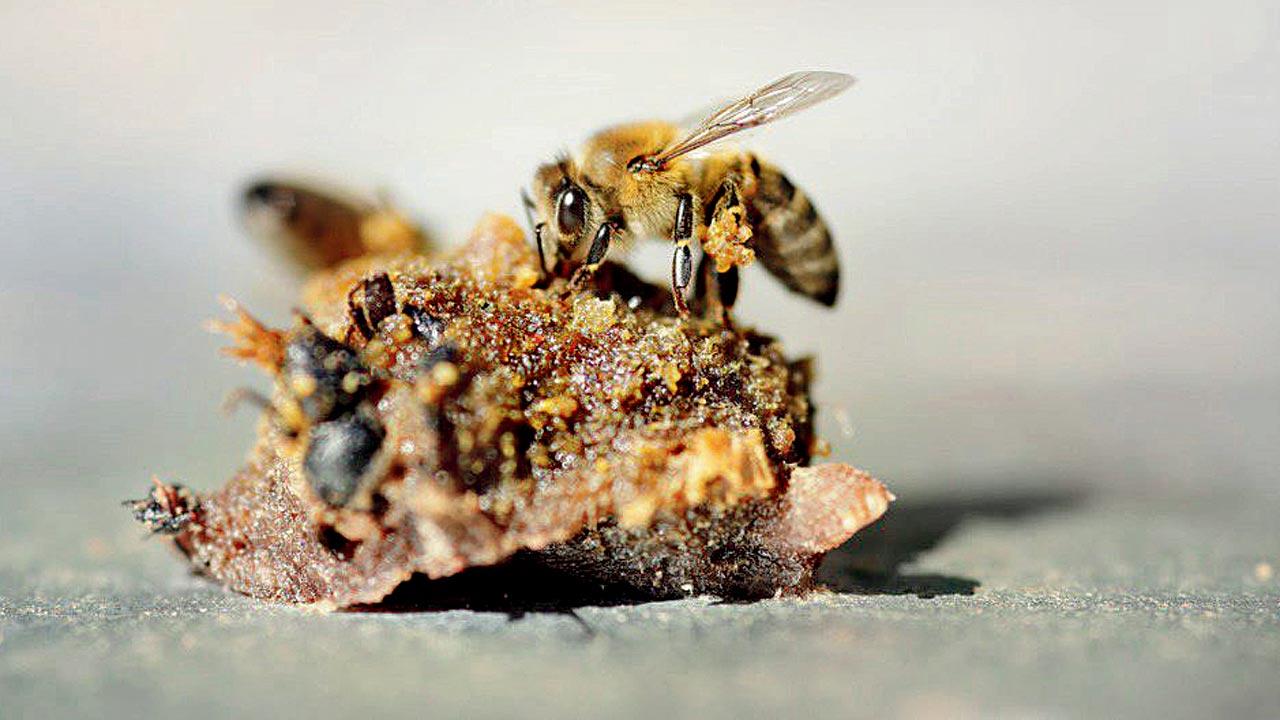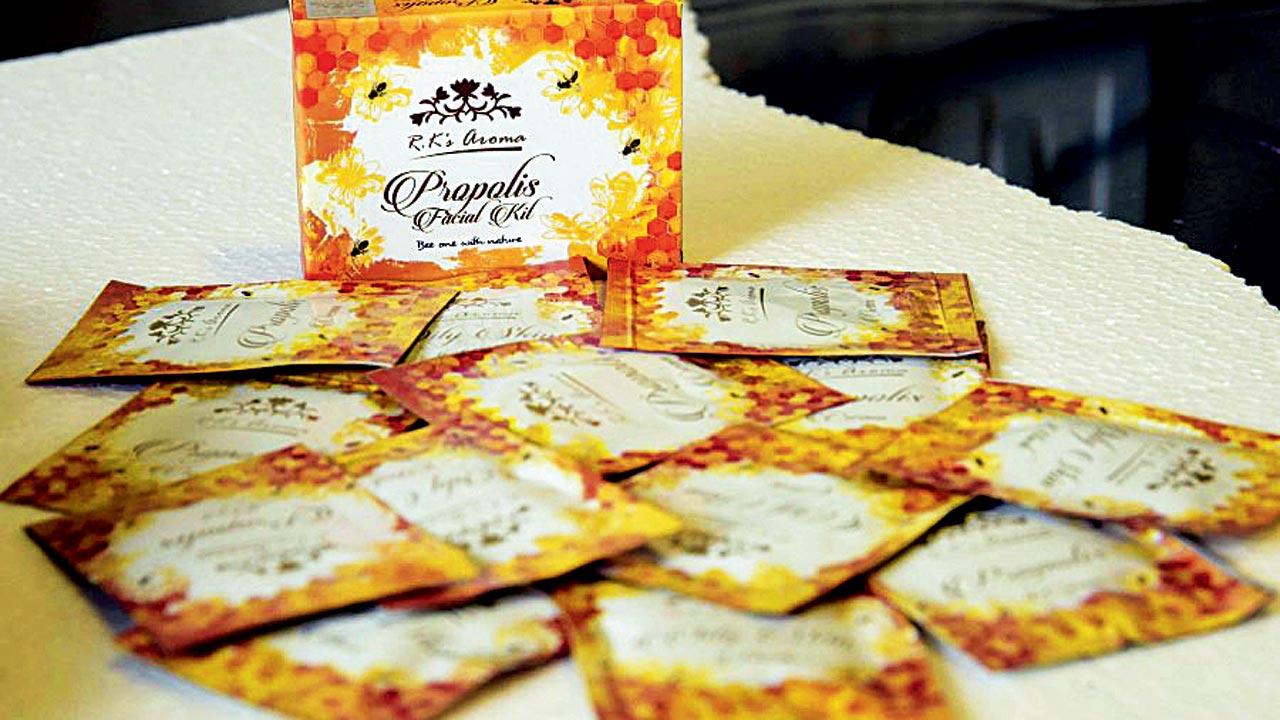As the magical bee goo is trending for putting a glow on our skin and healing wounds, what price is the ecosystem paying?

Not new to civilisation, bee glue has been used for embalming, oral health and even to treat wounds on fish. It’s what bees regurgitate after ingesting pollen, plant resin, and tree sap
Heard of propolis yet? You will soon. It’s the newly-rediscovered, ancient wonder ingredient—used to keep pharaohs fresh in tombs while their souls travelled to the other worlds—that’s trickling into Indian skincare and wellness. Propolis-based toothpaste from New Zealand is already sitting in the aisles of local pharmacy chains, and homegrown beauty brand Earth Rhythm has three products—serum, cleansing balm and overnight gel—with this as the hero ingredient.
So what is this tongue-twister? “Bees collect all kinds of plant debris,” explains regenerative farmer Simrit Malhi, “not just pollen—flower and leaf sap, tree resin, bark, leafy material, tiny seeds. Honey bees swallow and regurgitate this debris, mix it with beeswax and honey, and line their hives.” Propolis is made up of plant material, enzymes from the bees’ stomach, honey and beeswax (secreted by honey bees to construct their honeycomb). Propolis or “bee penicillin” provides both, structural support and sterilisation.

It’s what bees throw up after binge-ingesting leaf sap and tree resin of coniferous trees; but because bees are magic, and not human teenagers, this vomit is strongly anti-bacterial and anti-fungal. It seals and patches tears in the hive, working like glue, and also embalms intruders.
“I know of an incident,” says Mumbai-based Prakash Shivdasani, proprietor of RK Aromas, “when a rat entered a hive, and died. Bees live at close-quarters and any virus, bacteria or fungal infiltration could spell death for the whole hive. When the rat entered, it was embalmed in propolis, and years later, when the hive was broken, we found an unrecognisable black chunk inside. When we broke the cast open, the rat cadaver was still fresh. That’s the power of propolis.”
 RK Aromas has been sourcing propolis from Ukraine and Croatia, and using it in their formulations. Pic/Atul Kamble
RK Aromas has been sourcing propolis from Ukraine and Croatia, and using it in their formulations. Pic/Atul Kamble
Shivdasani, a chemist, has been using it for close to 40 years, after his friend got him a tincture from Croatia. He now imports propolis from Ukraine and Croatia, and by making a compound with vegetable oils, puts it to use in topical applications, such as a facial kit. By mixing with alcohol, it can be ingested for oral hygiene. “I’ve seen it work wonders for eczema, psoriasis, ring worms,” he says, “it’s even used to treat wounds on fish.”
But, the concern among environmentalists is the impact the commoditisation of something so precious and labour-intensive would have on the lives of pollinators, who are already too stressed to carry on the work crucial to the environment. Though not scientifically measured, by Shivdasani’s estimate, it takes 1,000 bees to make a drop of propolis. Kunal Singh, founder of the Tenacious Bee Collective, estimates that a colony with 8,000 to 10,000 bees would produce about 3 kg of the magical goo over a year. The outfit works with communities in Himachal Pradesh to support local beekeepers in developing sustainable, non-exploitative methods of honey production, Propolis entered the beauty market via Korean beauty products, but served only those who went looking for it. Like content creator and FMCG marketer Swati Mehta. A dedicated beauty devotee, Mehta has supremely sensitive skin that flares up with stress, exposure to sun, and the application of a hostile beauty product. “Most mainstream ingredients are not compatible with sensitive skin,” she says, “and the allergic reaction has been so bad that I have landed in the hospital once.” While researching ingredients that could help with these flare-ups, she chanced upon iUNIK’s Propolis Vitamin Synergy Serum about four years ago on an Instagram seller’s account, and from there, moved on to US-based brand Farmacy’s serums and moisturisers that contain it. Now, there’s some or the other version of a formulation containing propolis on her dressing table. “It’s my go-to product for flare-ups,” she says.
 Prakash Shivdasani, Latha Sunadh and Swati Mehta
Prakash Shivdasani, Latha Sunadh and Swati Mehta
Latha Sunadh, an editor at an MNC turned to propolis five years ago, again via Korean skincare products. “I have dry skin,” she says, “and it gets extra dry and scratchy in winter. No amount of creams helped. At the same time, I started having acne and post-acne scars—that’s where propolis came in handy too. Anytime I see dryness taking over or acne having a free run, I add a propolis-based product into my regime. It instantly calms my skin.” As she turned into her fourth decade of existence, she found the goo also provided antioxidants for a damaged skin barrier. “My favourite brand, Cosrx, even has a propolis range,” she says, adding it helps with hydration, calming and pigmentation.
So, what’s the price the original manufacturers of this wonder product—the bees—pay for this glow job? “Besides being used to repair and protect the hive,” says Malhi, “there is some evidence that bees use propolis to increase their own immunity. Bees have almost no immune system of their own and leading scientific theory shows that this is because they might be relying on propolis for their immunity.”
The good news is, it does not stress the bees to produce propolis. “It’s almost a daily activity for them,” says Malhi. “Bee-keepers have been known to scrape propolis off a hive (the hive is fully lined with it) daily with no stress to the bee or the hive.” Singh talks about how it collects in the holes in jute bags used to cover hives, and teaching bee-keepers to sell it might reduce the stress on the farmer to produce and sell honey. “A bee-keeper gets about Rs 70 for one kilo of raw honey,” he says, “while it takes them about R150 to make the same amount. Relying on propolis could open up another avenue of income.”
Devotees such as Sunadh and Mehta have to believe what brands tell them about the production process, though. “American brands,” says Mehta, “have stringent protocols in place for procurement, production and regulation of raw materials. So we can believe what they say on the bottle. Korean brands, however, do not have such measures in place.” “I’ve heard that it’s not something that is sustainable, and since it’s not vegan, that can be an issue too,” says Sunadh. Earth Rhythm—which says on its website that it is PETA (People For the Ethical Treatment of Animals)-approved and cruelty free—says that its raw materials are sourced in an environmentally and ethically responsible manner. We reached out to the founder and CEO Harini Sivkumar, but at the time of this report going to print, there was no response.
The function of propolis itself gives an indication to what hunger for it could do. “Like anything foraged from the wild, the amount harvested is key,” says Malhi. “The bee colony will do everything it can to protect its hive, and so, the hive will be constantly fixed with propolis as more is scraped away. Under normal conditions, a healthy colony of honey bees will have surplus ‘hive products,’ including propolis which can be removed without overtaxing it. Good beekeepers have been ethically harvesting these for centuries, by minimising harvest during winter or monsoon.”
However, Malhi sees the stress that increasing honey bee colonies will cause to native, wild bee species. “As prices for honey and other hive products rise, an increasing number of businesses and homeowners will install [non-native] honeybee hives,” she says. “This unnatural increase in population affects wild non-honey bee species, which are also pollinators. Non-honey bees live in nests, inside trees, between stones and even in the ground and do not build hives, but are excellent pollinators and essential to a healthy eco-system.”
So what’s the solution? Controlling consumption and recognising that native, wild species of bees—that may not yield any commodity for humans—are
extremely important.
 Subscribe today by clicking the link and stay updated with the latest news!" Click here!
Subscribe today by clicking the link and stay updated with the latest news!" Click here!










